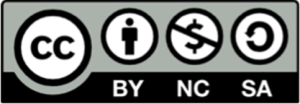5.4 Analyzing Competitors
After reading this section, students should be able to …
- Analyze business-level strategy
- Break-Even Point (BEP) Analysis
- SWOT (Strengths and Weaknesses) analysis
5.4.1 Analyze business-level strategy (BLS)
Identify competitor’s BLS – is it differentiation or low-cost leader, broad or focused or integrated? Given its relative competitive position, how well has the company invested its resources? Has the company used different BLS in its various regions? For example, it may offer a low-cost product in one region and differentiated products in others. Be sure to give a full account of a company’s BLS to show how it competes.
Once completed, this first step will provide a broad picture of how a competitor is operating and puts you in a position to evaluate the profit potential of its strategy. Thus, you can make conclusions about the past or make recommendations concerning future actions. However, first consider the company’s strategic context, or the environment within which the company is competing to achieve its strategy.
5.4.2 Break-Even Point (BEP) Analysis
A break-even point is that volume of sales in which the contribution from each unit sold covers the firm’s fixed costs and its incremental variable costs. To calculate the BEP, first calculate contribution margin, CM = P – VC, where contribution margin is the unit price less a single unit variable cost. Then, BEP = FC / CM, where breakeven point is the firm’s fixed cost divided by the contribution margin per unit.
From Investopedia (2018). An analysis to determine the point at which revenue received equals the costs associated with receiving the revenue. Break-even analysis calculates what is known as a margin of safety, the amount that revenues exceed the break-even point. This is the amount that revenues can fall while still staying above the break-even point.
5.4.3 SW Analysis
The first part of the SWOT (Strengths and Weaknesses) analysis will provide the information on the company’s functional competencies. It requires to investigate all aspects of the firm’s operations including supply chain, marketing, research and development, and finance to further to gain a picture of where the company is going. For example, successfully pursuing a low-cost leader or a differentiation strategy requires very different sets of competencies. What are their competencies? Has the company demonstrated evidence of developing the right ones? If it has, how can it exploit them further? Can it pursue both a low-cost leader and a differentiation strategy simultaneously?
Example 5.7 SWOT Analysis
No company is too big or too small to conduct a SWOT analysis! Take for example, Starbucks Coffee Company and their SWOT analysis. Among their strengths is a strong brand image that includes Ethos Water, Seattle’s Best Coffee, and Teavana. Conversely, their product can be imitated and the company must constantly battle its price points to remain competitive. Through its SWOT analyses Starbucks can leverage its strengths and opportunities by analyzing its weaknesses and threats.
Source: Panmore Institute, Starbucks Coffee Company SWOT Analysis & Recommendations, Charissa Roberts, 2019Wi
Reference:
- Investopedia, Break-Even Analysis, accessed November 2018.
Source:
Section 5.4 Analyzing Competitors is edited and adapted from the chapter ‘Strategy Analysis Framework (SAF)’ appearing in ‘Strategic Management’ Copyright © 2020 by John Morris and is licensed under a Creative Commons Attribution-NonCommercial 4.0 International License.


